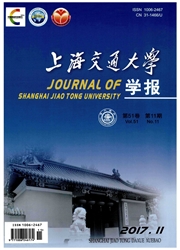

 中文摘要:
中文摘要:
借助于高速电荷耦合器件(CCD)相机,对宽125μm、深300μm的聚二甲基硅氧烷(PDMS)微通道内的液滴产生和流动进行了可视化实验研究,通过改变水(离散相)和硅油(连续相)的流量比,分析了液滴的长度、运动速率和产生频率的变化情况.结果表明:微通道内液滴的无量纲长度与水、油流量比之间存在着明显的线性关系;而液滴的运动速率比两相混合物的表观速率大.同时,提出了能够简单、准确描述液滴运动速率的实验拟合公式,并建立了预测液滴产生频率的模型.与实验结果对比发现,所建模型的预测值与实验值较吻合,两者偏差在±12%以内.
 英文摘要:
英文摘要:
With the aid of a high-speed CCD camera, the droplet formation and flow characteristics in a polydimethylsiloxane (PDMS) rectangular microchannel with a width of 125 μm and a depth of 300 μm were experimentally investigated. By changing the volumetric flow ratios of water (dispersed phase) and silicon oil (continuous phase), the experimental data on droplet length, velocity, and generation frequency were obtained. Experimental results show that the dimensionless length of droplet in the microchannel can be well determined by the water/oil flow ratio, and a linear relationship is established between them. It is found that the velocity of droplet is larger than the two-phase mixture superficial velocity. Besides, a simplified correlation for the precise prediction of the velocity of droplet was developed. In addition, a model predicting the generation frequency of droplet was proposed. The predicted values agree well with the ex- perimental data within a deviation of approximately 4-12%.
 同期刊论文项目
同期刊论文项目
 同项目期刊论文
同项目期刊论文
 期刊信息
期刊信息
